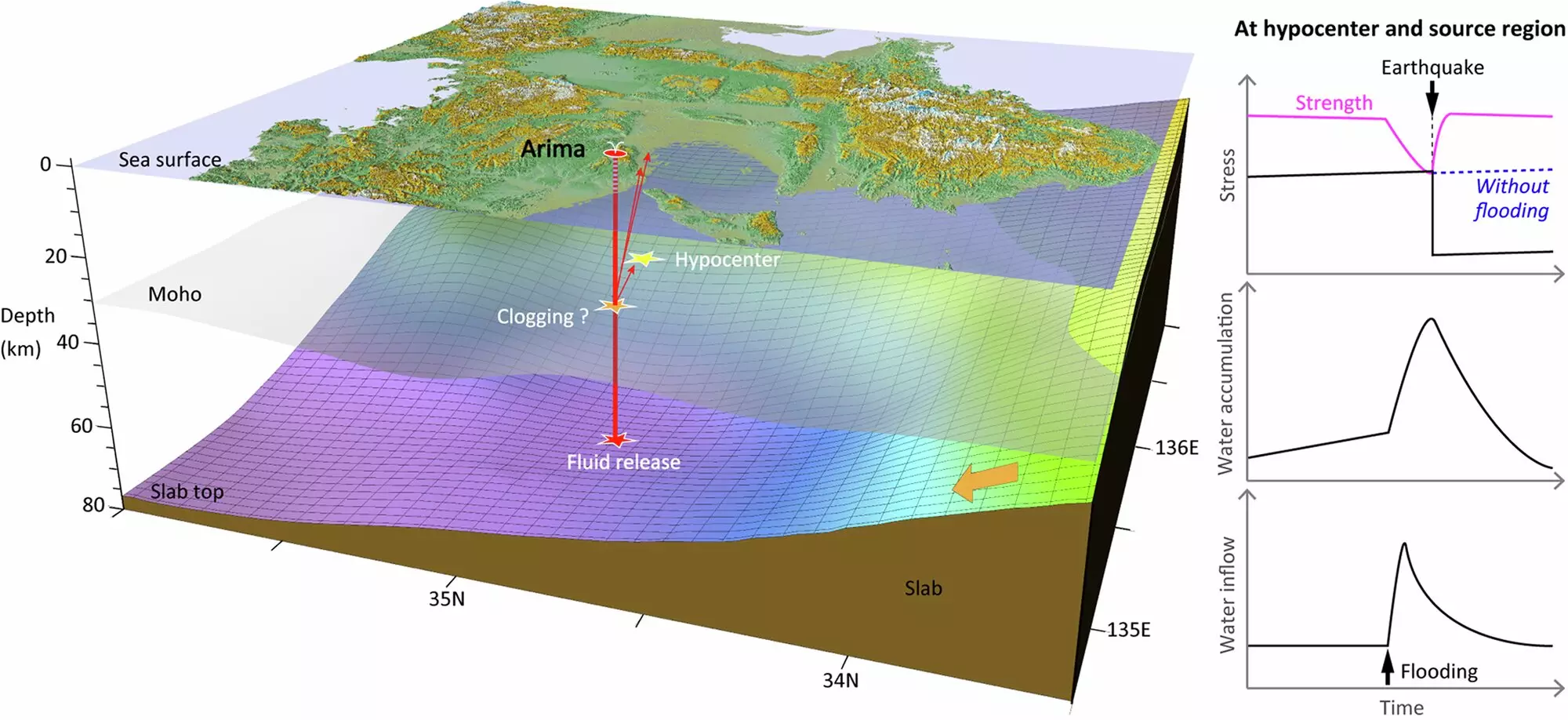Recent research conducted by scientists at the University of Tsukuba has unveiled a fascinating and potentially alarming relationship between subterranean water sources and seismic activity, particularly the 1995 Kobe earthquake. This groundbreaking study delves into how deep underground flooding, specifically beneath the Arima Hot Springs, may have served as a catalyst for one of Japan’s deadliest earthquakes. By examining stable isotope ratios and chloride ions in the hot spring water over several decades, the researchers have pieced together a compelling narrative that connects the Philippine Sea Plate with this catastrophic event.
The core of the researchers’ findings lies in isotopic analysis—a technique that allows for the identification of water sources based on their unique isotopic signatures. In the case of Arima Hot Springs, the unusually high salinity—over twice that of seawater—hints at the origin of this water being linked to the subducting Philippine Sea Plate. This link is vital as it underlines the importance of regional geological processes in contributing to various natural phenomena. However, while isotopic analysis provides compelling evidence, establishing a direct causal relationship between these water sources and seismic events remains challenging.
According to the study published in Communications Earth & Environment, researchers observed an intriguing pattern: the isotopic ratios of the hot spring water surpassed those expected from nonmeteoric components, thereby supporting their numerical models. Equally significant was the observation of the proportion of plate-derived water declining following the onset of deep well drilling in the 1940s. However, a troubling spike in this percentage was identified around 1995, coinciding with the Kobe earthquake. This correlation between increased water influx and seismic activity elicits further investigation into the behaviors of underground water systems, particularly regarding their interaction with geological faults.
Implications of Findings
Crucially, the data suggests that prior to the 1995 earthquake, increases in specific water characteristics, like chloride ions and radon concentrations, were documented in conjunction with three of the seven springs studied. This reinforces the notion that distinct changes in groundwater chemistry may serve as precursors to seismic events. The researchers estimate that the volume of plate-derived water that accumulated during this timeframe was over 100,000 cubic meters—substantial enough to potentially destabilize geological fault lines and trigger earthquakes.
The implications of this research extend beyond the Kobe earthquake, as similar hydraulic phenomena have been observed during the Matsushiro earthquake swarm in the late 1960s. These findings advocate for closer monitoring of hot spring water, particularly those in geologically active regions, as they may hold the key to improving earthquake prediction methodologies. Understanding the dynamics of underground water systems offers a new lens through which to approach seismic risk management and disaster preparedness.
Ultimately, while the exact mechanisms connecting water movement and seismic activity are complex and multifaceted, this research opens new avenues for exploration and emphasizes the importance of comprehensive geological assessment in understanding earthquakes.


Leave a Reply